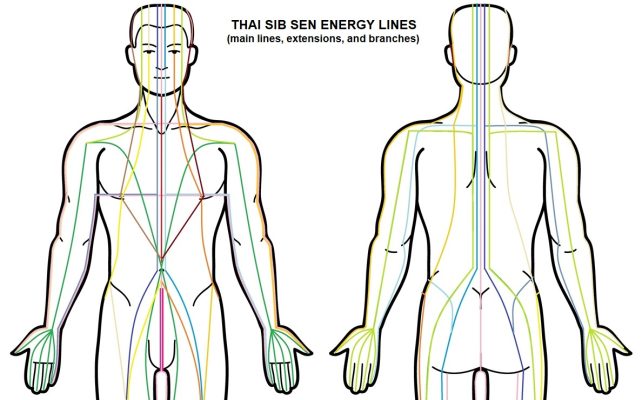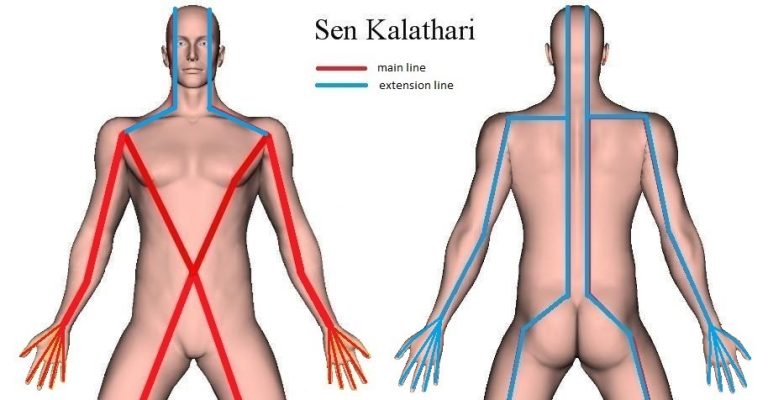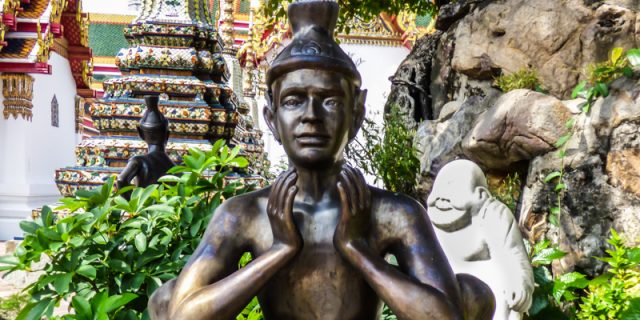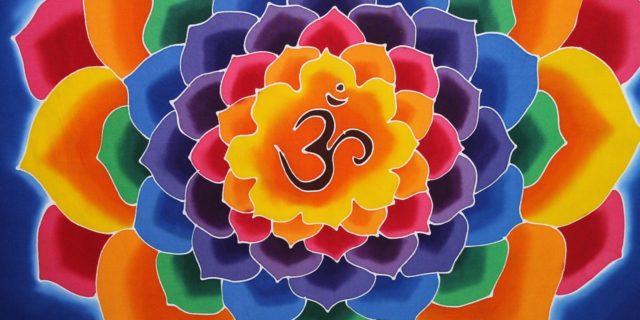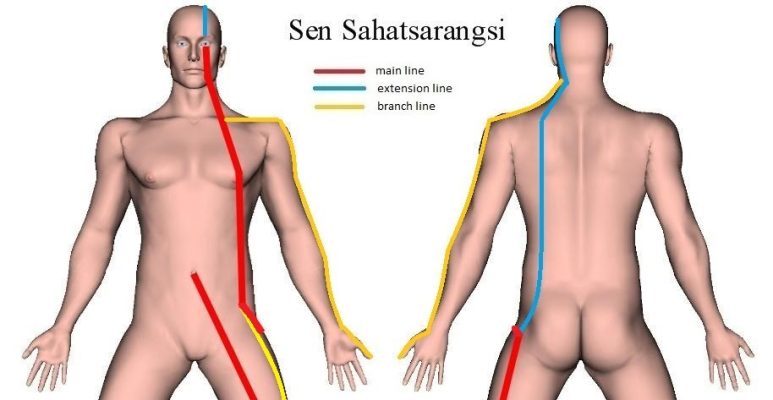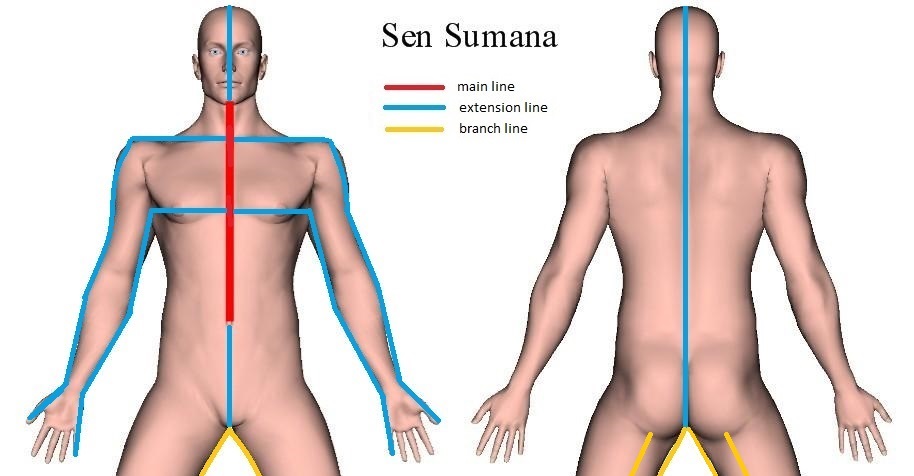
Sen Sumana is considered the primordial and most important of the ten Thai Sen Energy Lines, and it’s often the starting point of enumerating the Sip Sen (Sib Sen or Sen Sip).
Other names found for Sen Sumana are Sumna, Summana, Susummana, or Sushumna.

As a rule, Sumana is associated with the Wind Element and respiratory function, but also with abdominal and digestive issues. Typically, the organs that are connected with this Sen Line are the heart, lungs, intestines, and stomach.
Nevertheless, there are also associations with the genital system and the limbs (arms and legs) through the Sen extension and branch lines.
Additionally, Sen Sumana has obvious similarities with the trajectory and location of the Sushumna Nadi in Indian Yoga. Moreover, in both the Thai and Indian system, Sumana i.e. Sushumna is considered the most important Prana pathway, and we find that the seven main Chakras lie along these channels.
Depending on the lineage and theoretical conception, some healers and therapist also claim that Sumana (or Sushumna) is the Energy Line to which all other pathways connect and receive there Prana supply from. Mind that Prana — Vital Life Energy — is called Lom Pran in Thailand.
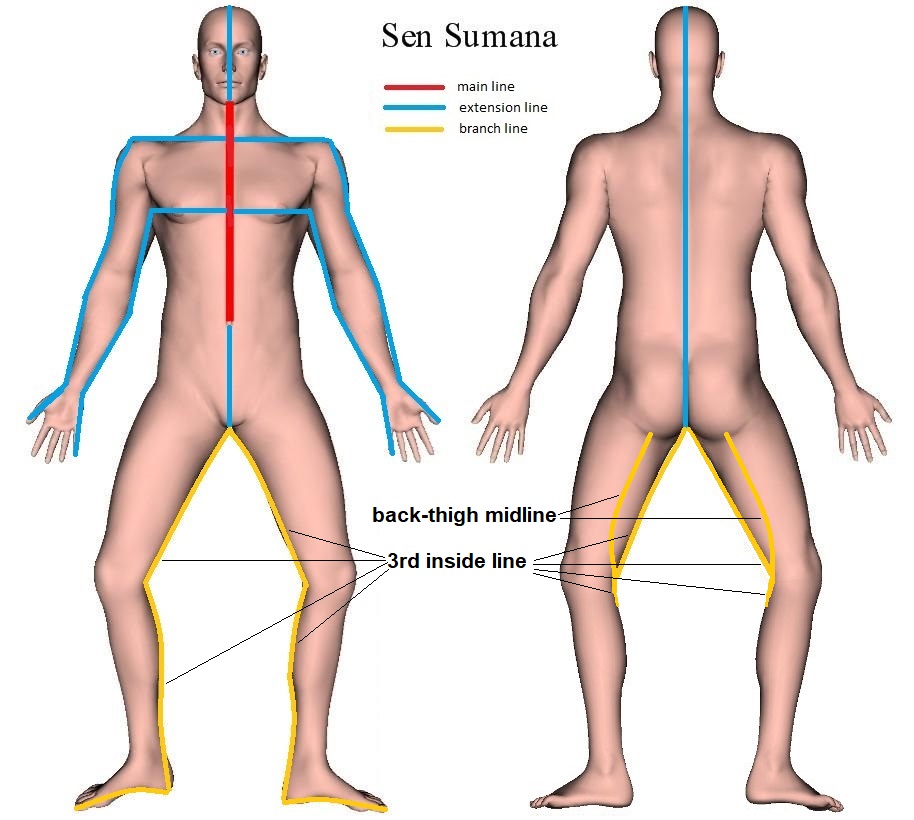
Trajectory of Sen Sumana
The Sen Sumana main line starts about two thumbs distance above the navel (near the solar plexus region), travels up following the mid-line of the body along the spinal column, runs up the throat and ends in the mouth at the tip of the tongue.
However, mind that depending on the Thai Massage lineage it’s thought that Sen Sumana runs in the spinal column and/or ends at the base of the tongue.
In addition to its main line, Sen Sumana has three extension lines (the blue color in the chart above):

- The first extension continues the same pathway as the main line, extending from the tip of the tongue, traversing over the head to the back of the body and following the spinal column downwards, running between the buttocks and genitals back to the front up to the navel.
- The second extension departs at the front of the body from the main line (at the height of the nipples), and proceeds into two directions along the third inside line of the arms to the pinky fingers.
- The third extension departs at the front of the body from the main line (at the height of the collarbone), and proceeds into two directions along the first inside line of the arms to the thumbs.
Sen Sumana also has four branch lines (the yellow color in the chart above), which are actually two mirrored branches; two for the left leg and two for the right leg.
- The first branch starts near the anus, descends along the third inside line of the leg until the foot, going round the heel and following the medial border of the foot and ending at the big toe.
- The second branch starts near the knee and goes up along the mid-line of the back-thigh up to the buttocks. In Thai Massage, this latter line is also called Line 0 (zero) of the back-thigh.
In fact, although having the same status and function as the Sushumna Nadi in Yoga, the main Sen Sumana Energy Line has exactly the same location and trajectory as the Yogic Saraswati Nadi. You can read more about this in our post Sen Sumana, Sushumna and Saraswati Nadi.
Therapeutic Indications of Sen Sumana
Sen Sumana typically addresses asthma, bronchitis, respiratory problems, chest pain, heart disease, spasm of the diaphragm, hiatal hernia, nausea, cold, cough, hunger pains, throat problems, speech issues, digestive problems, abdominal pains, upper body paralysis, mania, daydreaming.
Through the extension lines, Sen Sumana also addresses issues with the shoulders and arms, and through the branch lines, Sumana addresses health conditions of the legs, notably related to the hamstrings and calf muscles.








